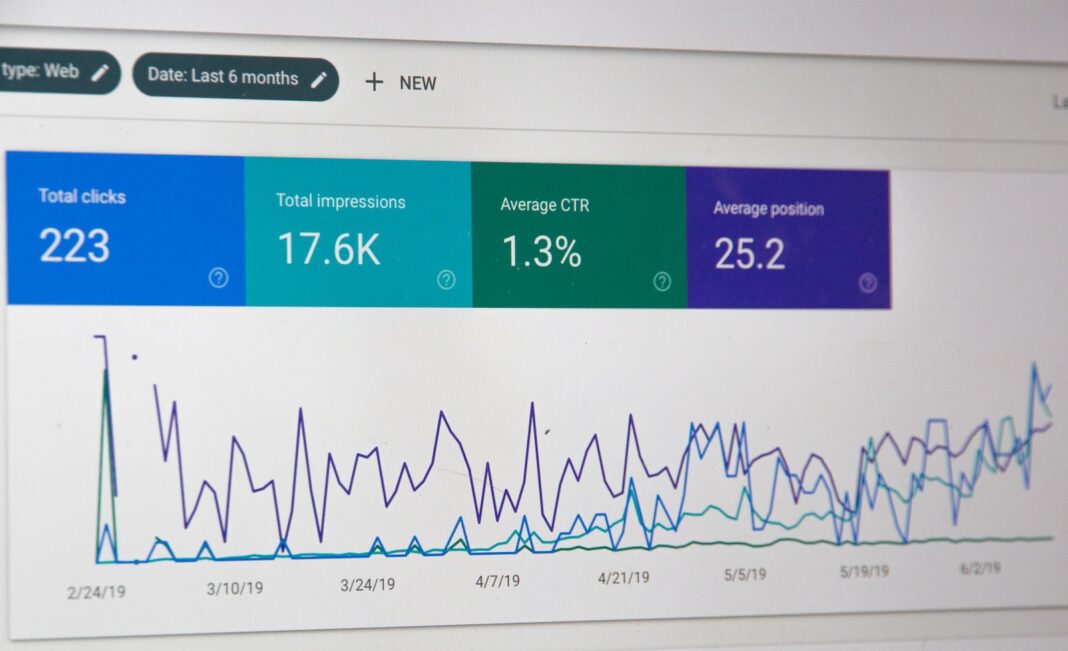Analytics are a powerful tool for measuring the performance of your business directory listings. By tracking key metrics, you can gain valuable insights into how your listings are performing and make informed decisions about how to optimize them for maximum visibility and engagement.
To get started, you’ll need to set up analytics tracking for your business directory listings. This can be done through a variety of methods, such as Google Analytics, or through the directory’s own tracking system. Once you’ve set up tracking, you’ll be able to measure a variety of metrics, such as:
1. Number of views: This metric will tell you how many people have viewed your listing. This is a good indicator of how visible your listing is and how much interest it is generating.
2. Click-through rate: This metric will tell you how many people who viewed your listing actually clicked through to your website. This is a good indicator of how effective your listing is at driving traffic to your website.
3. Conversion rate: This metric will tell you how many people who clicked through to your website actually completed a desired action, such as making a purchase or signing up for a newsletter. This is a good indicator of how effective your listing is at driving conversions.
By tracking these metrics, you can gain valuable insights into how your business directory listings are performing and make informed decisions about how to optimize them for maximum visibility and engagement.
Analyzing the Impact of SEO on Your Business Directory Listings
Search engine optimization (SEO) is an important tool for businesses to increase their visibility online. SEO helps businesses to rank higher in search engine results, which can lead to increased website traffic and more customers. By optimizing your business directory listings, you can ensure that your business is seen by potential customers and that your listings are accurate and up-to-date.
When optimizing your business directory listings, it is important to include relevant keywords that are related to your business. This will help search engines to identify your business and rank it higher in search results. Additionally, you should ensure that all of your business information is accurate and up-to-date. This includes your address, phone number, website, and any other relevant information.
Another important factor to consider when optimizing your business directory listings is the quality of the content. You should ensure that your listings are well-written and contain relevant information about your business. This will help to attract potential customers and increase the chances of them visiting your website.
Finally, you should also consider the use of backlinks. Backlinks are links from other websites that link back to your business directory listing. This can help to increase your ranking in search engine results and make your listing more visible to potential customers.
By optimizing your business directory listings, you can ensure that your business is seen by potential customers and that your listings are accurate and up-to-date. This can help to increase website traffic and lead to more customers for your business.
Leveraging Performance Metrics to Improve Your Business Directory Listings
Business directory listings are an important part of any company’s online presence. They provide potential customers with information about your business, such as contact details, location, and services offered. As such, it is important to ensure that your business directory listings are accurate and up-to-date.
One way to ensure that your business directory listings are performing optimally is to leverage performance metrics. Performance metrics are measurements that can be used to track the success of your business directory listings. By tracking these metrics, you can identify areas of improvement and make changes to your listings accordingly.
The most important performance metric to track is the click-through rate (CTR). This metric measures the number of people who click on your listing after viewing it. A high CTR indicates that your listing is attractive and relevant to potential customers. If your CTR is low, it may be a sign that your listing needs to be updated or improved.
Another important metric to track is the conversion rate. This metric measures the number of people who take a desired action after viewing your listing, such as making a purchase or signing up for a newsletter. A high conversion rate indicates that your listing is effective in driving customers to take action. If your conversion rate is low, it may be a sign that your listing needs to be more engaging or informative.
Finally, you should also track the bounce rate of your business directory listings. This metric measures the number of people who view your listing and then leave without taking any action. A high bounce rate indicates that your listing is not engaging enough to keep potential customers on your page. If your bounce rate is high, it may be a sign that your listing needs to be more attractive or informative.
By tracking these performance metrics, you can identify areas of improvement and make changes to your business directory listings accordingly. This will help ensure that your listings are attractive and relevant to potential customers, and will ultimately help to improve your business’s online presence.
Utilizing A/B Testing to Optimize Your Business Directory Listings
A/B testing is a powerful tool for optimizing business directory listings. It is a method of comparing two versions of a web page or app to determine which one performs better. By testing different versions of a listing, businesses can identify which elements are most effective in driving customer engagement and conversions.
A/B testing involves creating two versions of a listing, each with a different element or combination of elements. For example, one version may feature a different headline, while the other may have a different image or call-to-action. The two versions are then tested against each other to determine which one performs better.
To get started with A/B testing, businesses should first identify the elements they want to test. This could include the headline, description, images, call-to-action, or any other element that could potentially influence customer engagement. Once the elements have been identified, businesses should create two versions of the listing and test them against each other.
When running an A/B test, businesses should track the performance of each version over a period of time. This will allow them to identify which version is performing better and make adjustments accordingly. It is important to note that A/B testing should be done on a regular basis to ensure that the listing is always optimized for maximum performance.
By utilizing A/B testing, businesses can optimize their directory listings and ensure that they are driving the best possible results. This can help businesses increase their visibility, engagement, and conversions, leading to greater success.
Understanding the Benefits of Tracking Your Business Directory Listings with Analytics
Tracking your business directory listings with analytics can be a powerful tool for understanding the effectiveness of your online presence. By monitoring the performance of your listings, you can gain valuable insights into how customers are interacting with your business and make informed decisions about how to optimize your online presence.
Analytics can provide you with a wealth of information about your directory listings, including the number of views, clicks, and conversions. This data can help you identify which listings are performing well and which need improvement. You can also use analytics to track the performance of specific keywords and phrases, allowing you to adjust your listings accordingly.
Analytics can also help you understand the impact of changes to your listings. For example, if you make changes to the content or design of a listing, you can track the performance of the listing before and after the changes to determine if the changes had a positive or negative effect.
Analytics can also help you identify trends in customer behavior. By tracking the performance of your listings over time, you can gain insights into how customers are interacting with your business and make informed decisions about how to optimize your online presence.
Finally, analytics can help you identify opportunities for improvement. By tracking the performance of your listings, you can identify areas where you can make changes to improve the effectiveness of your listings. This can help you maximize the impact of your online presence and ensure that your business is reaching its full potential.
Overall, tracking your business directory listings with analytics can be a powerful tool for understanding the effectiveness of your online presence. By monitoring the performance of your listings, you can gain valuable insights into how customers are interacting with your business and make informed decisions about how to optimize your online presence.



